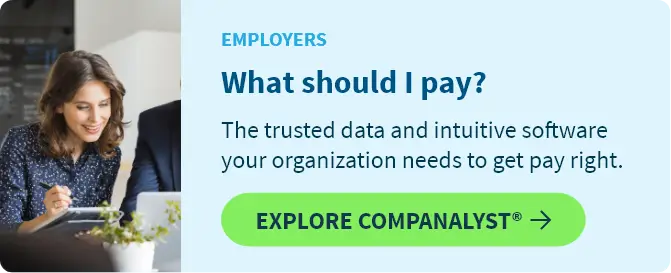Employee Stock Incentive Plan: Definition, Types & Template
An employee stock incentive plan is a powerful tool that many companies use to attract, retain, and motivate employees. This type of plan allows employees to own a piece of the company by offering stock options or shares. It aligns the interests of employees and shareholders by giving employees a personal stake in the success of the business.
What is an employee stock incentive plan?
An employee stock incentive plan is a compensation strategy where companies offer employees ownership through stock options or shares. It acts as a part of the benefits package or as an incentive for meeting performance goals and long-term service, linking employee success to company growth.
While typically offered to executives or key employees, these plans can extend to all staff, promoting loyalty, reducing turnover, and promoting a strong company culture by motivating employees to contribute to shared success.
Types of employee stock incentive plans
Below are the primary types of restricted stock awards, along with considerations for legal or tax advice and other stock-based awards.
Stock options
These allow employees to purchase company shares at a set price after a specified period or upon meeting performance goals. There are two main types:
Incentive Stock Options (ISOs): Offered to key employees, these have favorable tax treatment.
Non-Qualified Stock Options (NSOs): Available to all employees but do not offer special tax benefits.
Pay Equity Audit and Certification ensures that your stock option offerings are equitable across all employee levels, promoting fairness in compensation.
Employee Stock Purchase Plans (ESPPs)
These enable employees to buy company stock at a discount, typically through payroll deductions, with a holding period to avoid extra taxes.
Restricted Stock Units (RSUs)
RSUs are shares granted to employees that vest after a certain period, requiring them to stay with the company to gain full ownership.
Employee Stock Ownership Plans (ESOPs)
These retirement plans involve companies contributing stock to a trust for employees, allowing them to accumulate ownership based on tenure and other factors.
Benefits of employee stock incentive plans
Implementing an employee stock incentive plan can offer a range of benefits to both the company and its employees. Below are some of the key advantages of an equity incentive plan:
Attract and retain top talent: Stock options and equity incentives serve as powerful recruiting tools, encouraging employees to join and stay with growing companies.
Align interests of employees and shareholders: Employee ownership ties financial well-being to company performance, motivating employees to act like shareholders and boosting productivity.
Encourage long-term commitment: Vesting schedules require employees to stay for a specified time to fully own shares, promoting retention and reducing turnover. Compensation Philosophy Facilitation helps define a compensation philosophy that emphasizes long-term employee commitment through stock incentives.
Improve employee morale: Employees feel a sense of ownership and pride in their work, knowing their contributions impact the company's stock price.
Tax advantages: Both employees and employers can benefit from favorable tax treatment, such as deferred taxes for ISOs and tax deductions for ESOP contributions.
Employee stock incentive plan template and example
For companies considering implementing a stock incentive or equity compensation plan, it’s important to have a clear, structured approach.
Below is a basic template and example for an employee stock incentive plan:
Template
[Company Name] Employee Stock Incentive Plan
Purpose: The purpose of this plan is to provide eligible employees with the opportunity to acquire an ownership interest in [Company Name], thereby aligning their interests with those of the company and its shareholders.
Eligibility: All full-time employees of [Company Name] who have completed [X] months of continuous service are eligible to participate in the plan.
Types of Stock Options Offered:
Incentive Stock Options (ISOs)
Non-Qualified Stock Options (NSOs)
Restricted Stock Units (RSUs)
Granting of Stock Options: Employees will be granted stock options based on their performance, tenure, and role within the company.
Vesting Schedule: Stock options will vest over [X] years, with [X]% of options becoming available to the employee each year.
Exercise of Options: Employees may exercise their stock options at a price of [$X] per share after the options have vested.
Example
XYZ Corporation introduces its employee stock incentive plan to reward high-performing employees with stock options. The company offers NSOs to all employees, vesting over four years, with 25% of the stock options becoming exercisable each year. Employees are eligible to exercise their options at a fixed exercise price of $10 per share after the vesting period.
Employee stock purchase plan vs incentive stock option
There are key differences between employee stock purchase plans (ESPPs) and incentive stock options (ISOs) that businesses need to consider when choosing which an equity compensation plan to implement:
ESPPs: Available to a broader range of employees, ESPPs allow them to purchase company stock at a discounted price, typically between 5% and 15% off the fair market value. Employees can contribute a portion of their salary towards buying shares, and the program may offer additional tax benefits if specific conditions are met, such as holding onto the stock for a designated period.
ISOs: These are typically offered to executives and key employees. They come with favorable tax treatment if certain conditions are met, such as holding the stock for at least one year after the exercise date and two years from the grant date. ISOs are subject to fewer taxes upon exercise compared to NSOs but are more restrictive in terms of who can receive them.
Executive Compensation helps develop competitive ISOs for key employees, ensuring attractive and compliant compensation packages.
FAQs
Here are some FAQs for better understanding
Is employee stock plans a good idea?
Employee stock plans effectively attract and retain talent, align employee interests with the company's goals, and offer financial rewards as the company grows. However, they also carry risks if the stock underperforms.
How does an ESOP program work?
An ESOP program creates a trust fund where a company contributes shares for employees. Over time, employees accumulate shares based on tenure, and upon retirement or departure, they can sell their shares back to the company.
What is the disadvantage of employee stock option plans?
The main disadvantages include the potential for stock value to decline, which could diminish the perceived value of the options. Additionally, employees may face tax implications when exercising stock options, and the long vesting periods and stock appreciation can be a disadvantage for those seeking immediate rewards.
Can you cash out on an employee stock plan?
Yes, employees can cash out on their stock options or shares once they are fully vested. However, this depends on the plan’s terms and the company’s policies regarding stock sales or buybacks. Some plans may require employees to wait for a specified period before selling their shares grant stock options.

How compensation technology fits into an overall business model
Insights You Need to Get It Right









